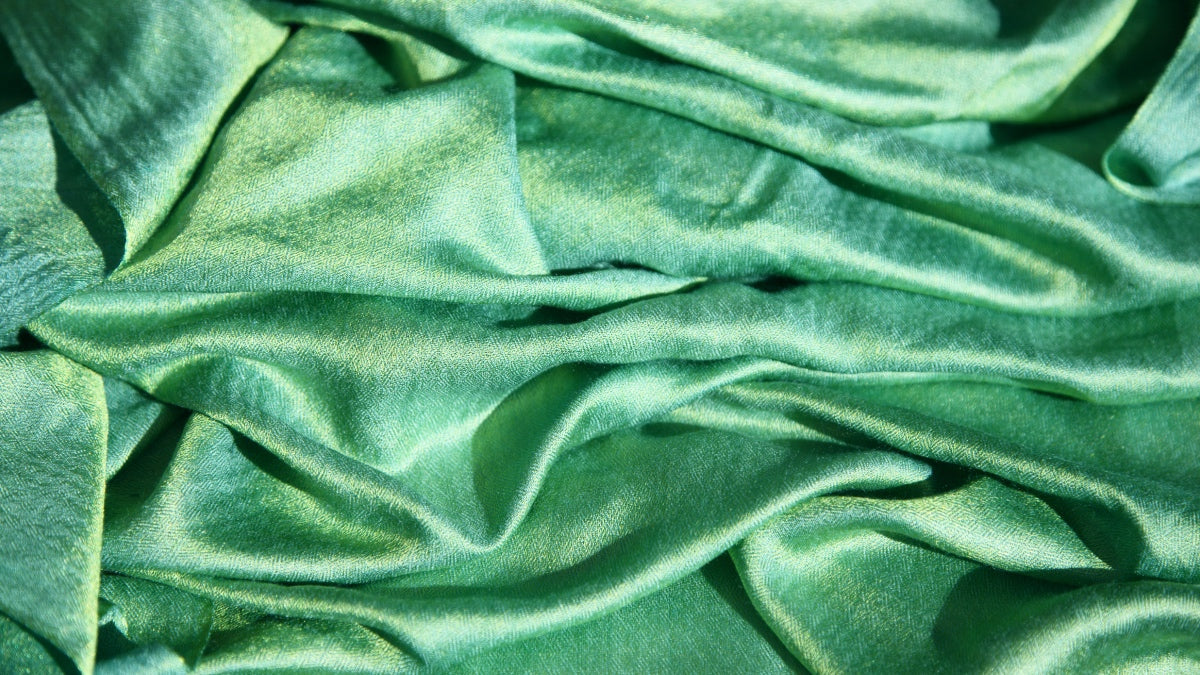
What Material Is Best for Bedding?
|
Time to read 5 min
This store requires javascript to be enabled for some features to work correctly.
Written by: Editorial Team
|
Time to read 5 min
Picking the right material of bedding – one that matches your personal and environmental needs – is one of the most important factors in improving and maintaining the quality of your sleep.
The right fabric should be comfortable, of course, helping you unwind and fall asleep more quickly, but it can also drastically affect the quality of sleep overall. Poor quality bedding can cause sleepers to overheat, sweat, and only achieve a light sleep, so material is not simply just for show.
Cotton bed linen is the most common material on the market when shopping for bedding. Egyptian cotton is widely regarded as the highest quality material available, with its extra-long fibres offering unmatched softness and breathability. Cheaper materials, such as pima cotton, offers the same smoothness from its long fibres, although its less pure material means that it’s a much cheaper alternative.
Organic cotton, grown naturally without any synthetic or chemical modifications, is the best option for those who want to help protect the environment, or suffer from sensitive skin that is prone to breakouts or allergic reactions. However, it lacks the strength of its longer-fibre contemporaries, meaning it is prone to shrink and can often lack the softness of more premium materials.
Linen bedding is another popular option with buyers, due to its ultra-soft feel, moisture-wicking in hot weather, and its natural, hypoallergenic qualities. However, its natural material means it comes in few colour and design options, and tends to wrinkle – all at a higher price than typical cotton.
Silk bed linen offers unmatched luxury with hypoallergenic qualities, with pure silk having a natural smoothness while still being breathable and soft to the touch. Its soft, cool material is particularly great for skin and hair, and can reduce tangles and acne breakouts due its moisture-handling abilities. However, genuine silk – which is paramount to getting its benefits – is some of the most expensive bedding out there.
Bamboo bed linen is made of natural fibres, with the premium-quality plant offering sustainable softness and breathable fabric, with its antimicrobial properties helping it stay clean and free of allergens. However, it is not an entirely natural material, typically using chemicals in the manufacturing and dyeing process, and requiring extra maintenance to ensure it doesn’t wrinkle.
Although not as common as other types of bedding, Tencel duvet covers are one of the most sustainable options available out there, offering both smoothness and moisture-wicking temperature control without compromise – unless you count the higher price tag.
Flannel bedding is a type of bedding that is traditionally derived from wool (although sometimes using cotton or synthetics), and is brushed on both sides during manufacturing to raise its fibres to the top. This provides optimum warmth and softness, that makes it ideal for bedrooms in the coldest climates.
Choosing the best material for bed sheets is key if you want to achieve year-round temperature control and softness that caters to the needs of your skin and overall health. The ideal material should be within your budget, match the needs of your typical bedroom temperature (whether it leans hot, cold, or is prone to both extremes), and offer breathability and durability that will help you achieve optimum sleep.
Our premium bedding is hand-chosen, using only the most reputable and high-quality brands. Our brand partners do not use misleading terms or synthetics to create a false impression of quality – the in-depth descriptions prove that and the quality of the material speaks for itself.
Duvet covers should ideally be low-maintenance and comfortable, offering breathability through the thick bedding without resulting in overheating – all while offering an outer design that you love. Our duvet covers offer a number of different designs, using only the highest-quality materials, that offer softness and strength in equal measure. Using only genuinely high-quality materials, such as bamboo, linen, and cotton, all tastes and requirements are catered to.
The ideal bedding is defined by your own unique requirements – whether it is to do with your bedroom temperature, budget, aesthetic or fabric feel preferences, skin sensitivities, or health problems that you may (or may not) have. If possible, a list of your most preferred qualities would prove to be helpful when shopping for new bedding and navigating all the material names. Once you have a good understanding of the jargon used by bedding retailers, read the product description to check the purity of the premium material, as some brands like to mix minimum levels of premium material mixed with synthetic or lower quality materials to manufacture the bedding cheaply and sell to customers at a high price, maximising profit over customer satisfaction.
Egyptian cotton has a reputation of its own compared to other cotton, thanks to its unparalleled quality and unique fabric. If bedding uses Egyptian cotton, it will typically be flagged as a key selling point for the product. Here’s what you need to know about what Egyptian cotton actually is, as well as its various benefits.
Choosing the right bedding can be a daunting task as we typically spend around one third of our lives in bed. When looking for natural, comfortable and long-lasting fabrics for bedding, linen and cotton rank highly. They share several similarities and both will help you get a good night’s sleep but there are also a few differences and being aware of these should make it easier to choose between the two. This guide takes a closer look at these differences so should prove helpful when making your choice.
With approximately half of Brits not washing their bedding within the recommended maximum of every two weeks, millions of sleepers are leaving themselves prone to irritants, allergens, and dirt.
Receive 10% off your first order when you subscribe to our newsletter





